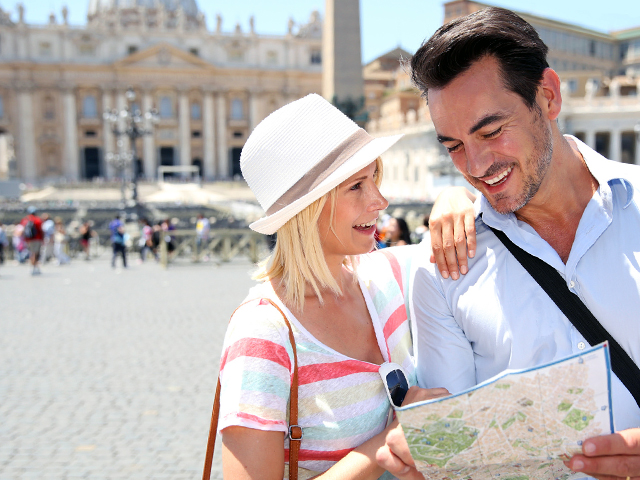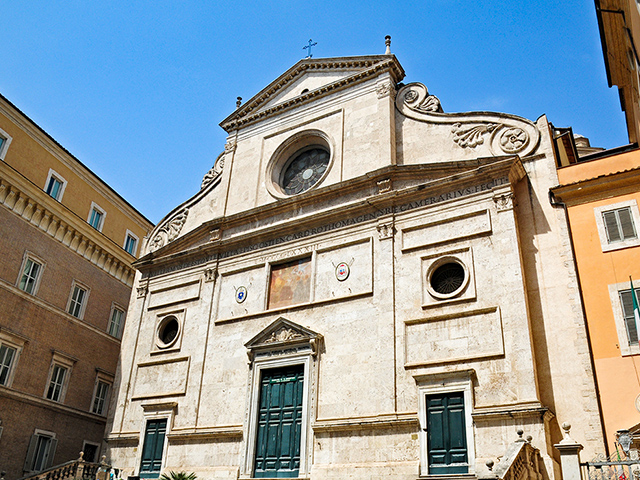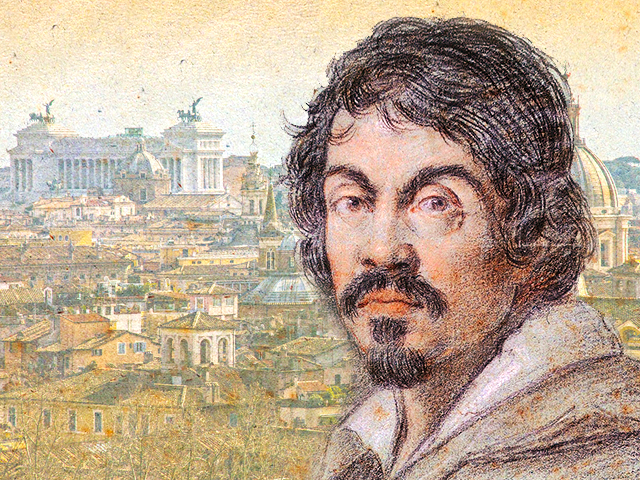Santa Maria in Vallicella or Chiesa Nuova
Visiting Chiesa Nuova of St Philip Neri: history, opening hours, location and what to see in the famous Barroque church among paitings by Rubens and Pietro da CortonaIn the heart of the historical center of Rome, in a widening of Corso Vittorio Emanuele II, the street which connects St. Peter's Square with Venice Square, near important points of interest such as Piazza Navona, Campo de' Fiori and Castel Sant'Angelo is located the Church of Santa Maria in Vallicella, one of the most beautiful baroque churches of the capital.
The church, which is located next to Palazzo dei Filippini, work of the genius of Borromini, is also known by the name of Chiesa Nuova (New Church) and it is deeply tied to the figure of the San Philip Neri. Here is the history!
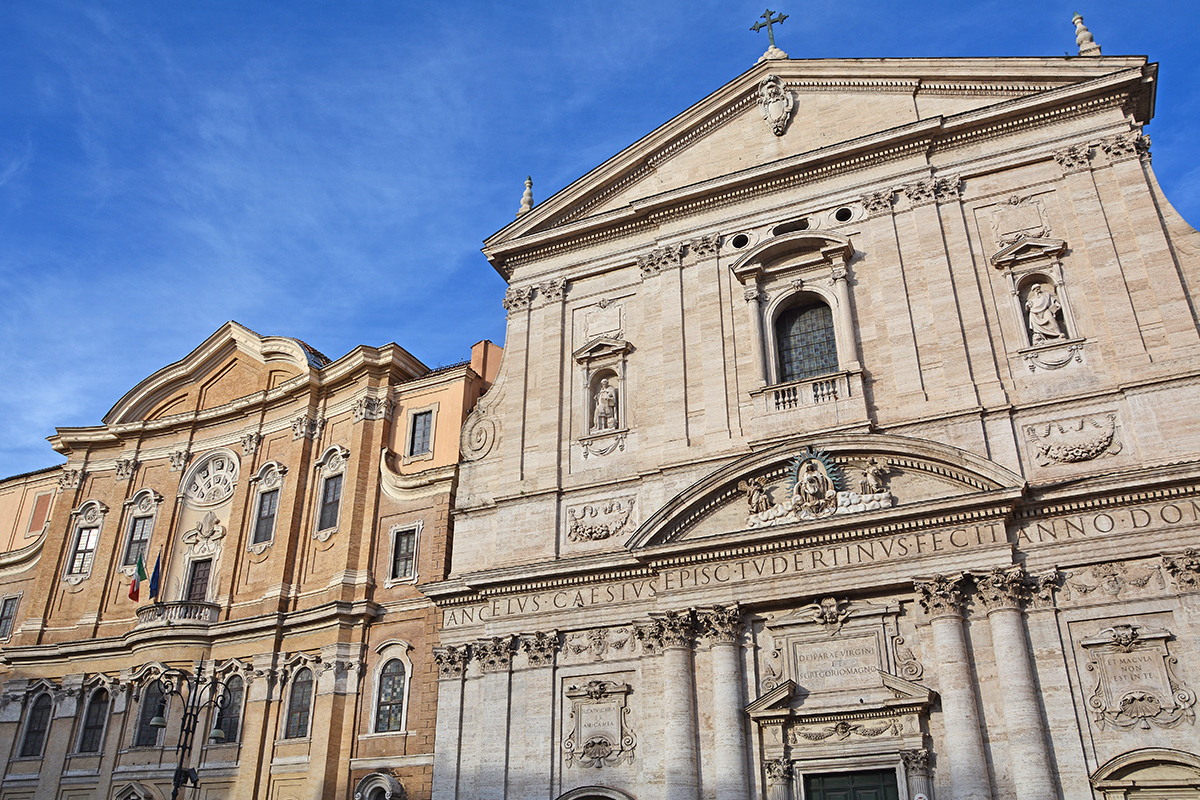
Church of Santa Maria in Vallicella and Palazzo dei Filippini
ST PHILIP NERI AND THE REBUILDING OF THE NEW CHURCH
In 1551 St Philip Neri founded the Confraternity of Pilgrims and Convalescents in order to offer help and assistance to the many pilgrims who came to Rome.
As a sign of recognition Pope Gregory XIII gave him as a gift the Church of Santa Maria in Vallicella (Our Lady in the Little Valley), so called for the presence of a small valley. Since 1557, thanks to a St Philip Neri initiative, the church was therefore completely reconstructed thus assuming the name of New Church.
The work, entrusted to architect Matteo di Città di Castello, were concluded in 1577 with the celebration of the first mass in the new building, which is formed by a single nave and four side-chapels decorated with stucco and polychrome marbles, designed by Domenico Fontana and Giovanni Antonio Dosio.
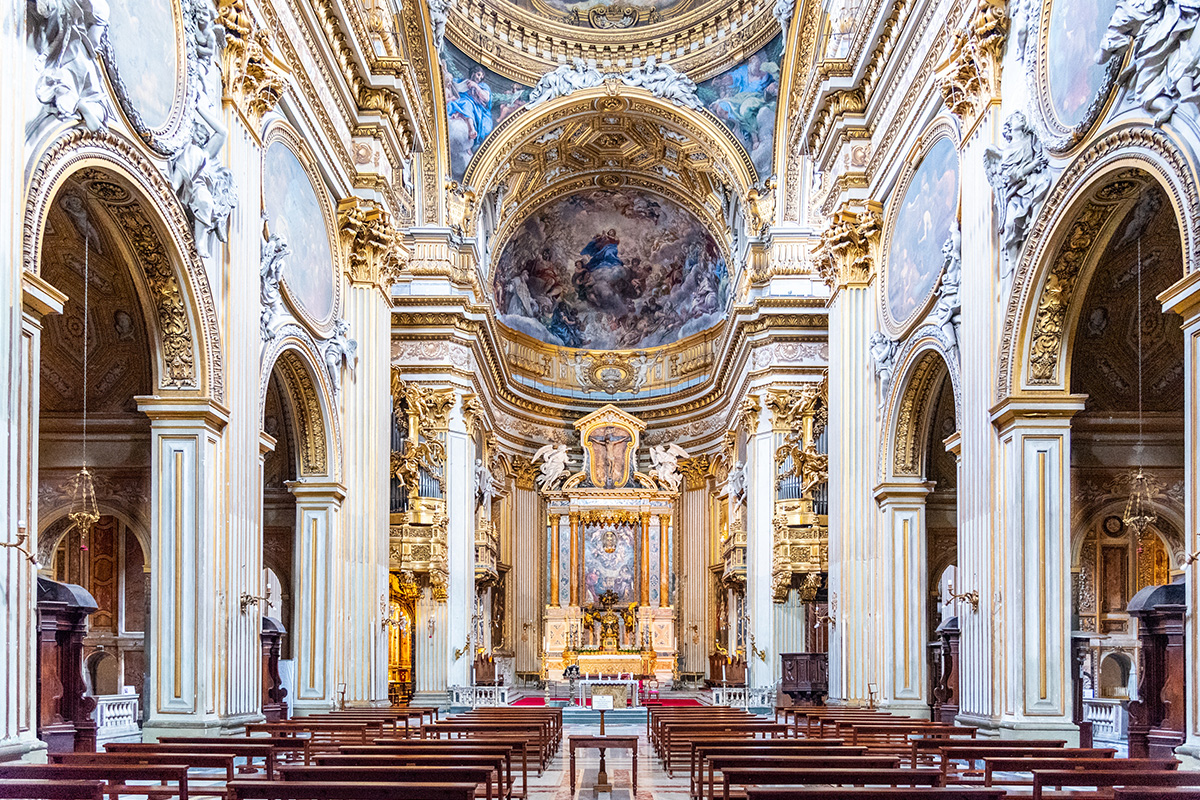
Church of Santa Maria in Vallicella - Nave
In 1586 under the guidance of Martino Longhi the Elder, were added a semi-circular apse, the transept and the dome. Only later between 1594 and 1617, according to a draft of Giacomo della Porta, the original plan was modified with the addition of two narrow aisles and other 2 chapels.
The construction of the façade, which began in 1594, projected by Fausto Rughesi, concluded in 1605, while the staircase was completed only in 1614. The tympanum that crowns the full width of the facade is due to an intervention by Carlo Maderno while the bell tower was added in 1666 by Camillo Arcucci.
The dome was amended in 1650 by Pietro da Cortona, who added a lantern surmounted by a dome to allow better lighting.
FROM PIETRO DA CORTONA TO RUBENS
Speaking from an artistic point of view, the facade is still in a transition phase. The interior of the church is a real Baroque joy: gold, stuccoes, frescoes and paintings fill the surrounding space in a sumptuous style and at the same time elegant.
Every corner is decorated in an almost obsessive and maniacal way: from the imposing columns to the oval paintings surrounded by stucco angels and glistening capitals. And thinking that before they started the work, the church was to sink due to the floods...!
In the main nave, in the ceiling, in the dome and on the apse are the wonderful frescoes by Pietro da Cortona. In particular, on the wall of the central vault is a scene depicting the alleged vision seen by St. Philip Neri.

Pietro da Cortona - The Virgin Appearing to St Philip Neri

Rubens - Madonna della Vallicella
In fact, they say that in 1576 while the New Church was being built, the Madonna appeared to Philip while he was intent to support an unstable rubble. The vision was therefore a clear signal of protection by the Madonna towards the projects and the work of the Saint.
Above the high altar, on the other hand, is located the famous painting by Rubens, the Madonna della Vallicella. The canvas, inserted in an altarpiece, represents the angels in the act of venerating the Virgin Mary with the child. The special feature is the fact that the miraculous image is unveiled via a mechanical device during the main holidays, such as the feast of St. Philip Neri on May 26.

Santa Maria in Vallicella - Apse by Pietro da Cortona

Santa Maria in Vallicella - Dome by Pietro da Cortona
On the lateral walls of the presbytery are two paintings also by Rubens on slate slabs: they represent respectively the Saints Gregory the Great, Papias and Maurus (on the left wall) and the Saints Flavia Domitilla, Nereus and Achilles (on the right wall). The patron of this great pictorial cycle was the bishop of Milan Federico Borromeo.
The incredible frescoes of the apse and the dome are also by Pietro da Cortona.
In the apse is shown the Assumption of the Virgin Mary between Angels and Saints. Our Lady, suspended on a soft cloud driven by young angels, seems about to reach in flight the Trinity represented in the dome almost due to the force of attraction generated from perpetual circular motion imparted to the painting Triumph of the Trinity, with God the Father and Son on the dome and the Holy Spirit in the lantern.
ST. PHILIP NERI
St Philip Neri (1515-1595) to whom can be atributed the merit of widespreading and institutionalizing the Pilgrimage of the 7 churches, (ancient pilgrimage that the faithful used to cover to pay homage to the saints Peter and Paul), was among the most influential personalities of the seventeenth century in Rome. Considered a saint already in life, after he founded the Fraternity that helped support the poor, he was canonized in 1622.
Believe it or not, it's well-known the episode of the resurrection of the young prince Paul Maximum, dead on March 16, 1583. It is told that thanks to the prayers of the Saint who joint to cheer him up, to the astonishment of the present, the boy awoke and began to speak, confessing that he wanted to reach his mother and sister in heaven.
If you want to learn more about Philip Neri, within the Church, in addition to the sacred remains of the Sant, stored in a small chapel, you can visit the rooms where he lived.
The Red Room contains relics and mementos of the Saint and on the vault there's a beautiful fresco illustrating an episode in the life of Philip, when he was saved by a miraculous intervention of Holy Mary.
The inner chapel, on the other hand, is a natural extension of the apse of the Chapel of the Holy in the church. On the altar, you can admire a beautiful portrait of St Philip in prayer attributed to Guercino.
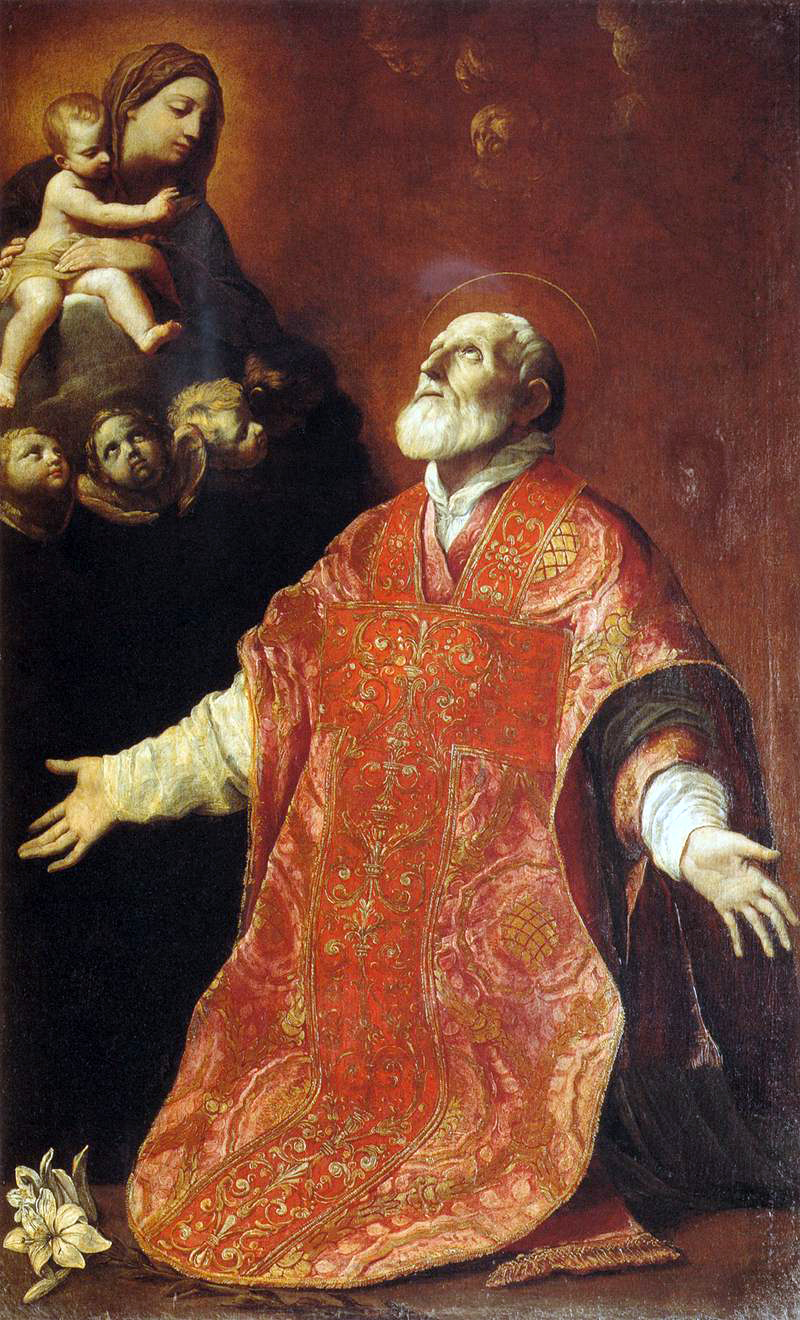
Portrait of St. Philip Neri
To better understand the importance of St- Philip Neri read also: TOUR OF THE 7 CHURCHES OF ROME: THE ITINERARY
Useful information
Parish of S. Maria in Vallicella - Congregation of the Oratory
- HOW TO GET THERE
From the Port of Civitavecchia go to Civitavecchia Train Station and get on the first train bound for Roma. After a 45-minute jouney get off at Roma San Pietro Station and take bus 64. After 6 stops get off at C.SO VITTORIO EMANUELE/TASSONI. Continue walking a few meters along Corso Vittorio Emanuele and you will get there.
- TIMETABLES
Opening hours:
7.30 - 12.00 and 16.30 - 19.00Confessions:
Weekdays: 8.30 - 10.00 and 17.00 - 19.00
Holidays: 10.00 - 12.00 and 18.00 - 19.00Holy Mass on weekdays: 8.00 - 10.00 - 18.30
Holy Mass on holidays: 10.00 - 11.00 - 12.00 -18.30
Vespers: every Sunday at 18.00- PRICES
Free admission



 PORT MOBILITY CIVITAVECCHIA
PORT MOBILITY CIVITAVECCHIA









